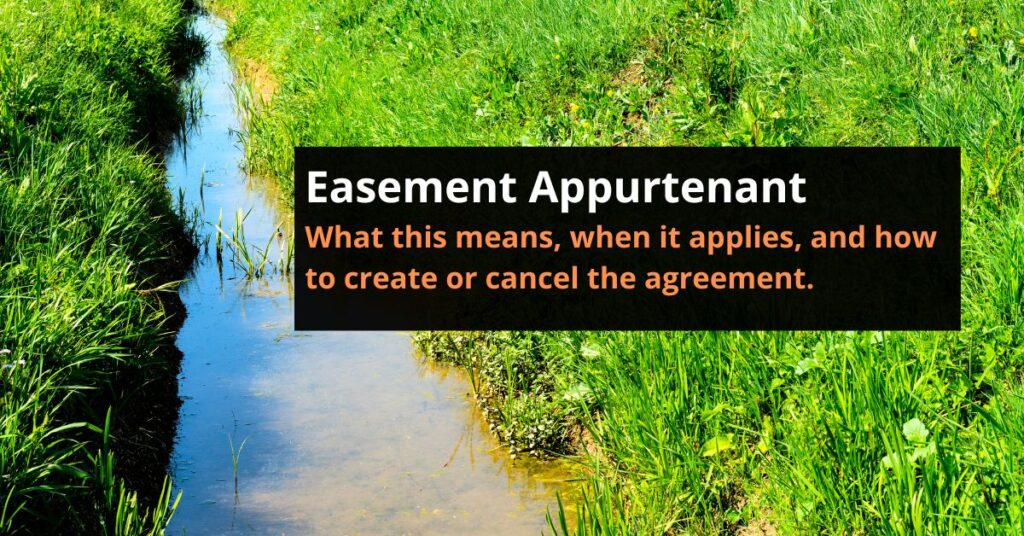If you have no other way to access your land by vehicle except your neighbor’s driveway, then you have discovered an easement appurtenant. An easement appurtenant is the right to use a portion of another person’s adjoining property for a specific purpose, like a drainage easement that allows you to divert water onto or through your neighbor’s property to prevent flooding.
An easement appurtenant transfers even if the owner sells the land to someone else. A title search usually reveals one, since it is part of the deed. If discovered after the sale, title insurance protects the buyer.
There are four common ways to create an easement appurtenant:
- Express easements (an easement is either given away or sold)
- Implied easements (a large parcel of land is split into smaller lots)
- Easements of necessity (if your lot is landlocked)
- Prescriptive easements (someone openly trespasses on your land continuously over several years, and no action was taken)
After establishing an easement appurtenant through an easement, it’s crucial to take the necessary steps to make it legally binding. But don’t worry, its a quick and easy three step process.
- Check with your local government to ensure that you meet the requirements because some jurisdictions require a written agreement to be executed in a certain way like the paperwork being notarized.
- Draft a written agreement that describes the easement and the rights and responsibilities of each party and have both parties sign it.
- Record the written agreement with the local government to make the easement part of the public record and deed.
Just like the creation of an easement appurtenant, ending one also requires certain circumstances. And there are lots of ways to end an easement appurtenant including:
- Both parties agreeing to end it, and the new agreement is put in writing and recorded with the local government.
- The reason the easement was created no longer exists.
- One party is giving up the easement by creating a release recorded with the local government.
- The easement was for a set amount of time, and that time has passed.
- The ownership of both properties is combined into a single owner (usually by a sale).
Since easements come in many forms, you should now feel more confident about what to look for with an easement appurtenant and how to create and end one.

